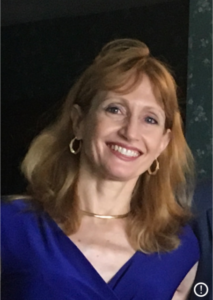By Didi von Deck, MD, GCFP CM
Almost everyone will get back pain at some point in their lives. Sometimes the pain doesn’t last very long, but sometimes the pain just doesn’t go away. About 20 percent of people affected by acute low back pain go on to develop chronic low back pain with recurring or persistent symptoms. Persistent pain doesn’t necessarily mean there is an underlying cause that is medically serious or even that there is a cause that can be identified and treated. In many cases, pain lingers despite standard medical and surgical treatments. Of the more than 20 million people in the United States who go on to have chronic back pain, most have tried multiple therapies. In dollar amounts, back pain costs the US more than $100 billion each year in medical bills, disability and lost productivity at work. For the individual suffering from pain, the costs go far beyond the money. Back pain can prevent people not only from being able to earn a living, but from being able to take care of themselves and their families, from participating in activities they enjoy, and can lead to a lack of self-worth and depression.
If you go to see your doctor, you may be offered the option of anti-inflammatory medications or narcotics, anti-inflammatory, menthol or CBD creams and gels, cortisone injections, back braces or physical therapy. Some health insurance will also cover chiropractic treatments, massage and acupuncture. As an orthopaedic surgeon, I suggest these modalities to my patients with back pain all the time. Patients have heard of them and like the fact that their insurance will at least partially cover the cost. They often have friends who offer advice on different remedies to try. But how effective are these treatments? Many articles published about back pain show that these interventions can help acute back pain, but once back pain becomes chronic (lasting more than 3 months) these interventions are only minimally effective. Moreover, a number of patients have already tried these treatments and more. They have been to pain clinics, have done mindfulness based stress reduction or meditation classes, have tried medical marijuana, have had platelet-rich plasma injections or radiofrequency ablations and sometimes even surgery and they still have pain. Is there any alternative?
Pain can come from many different structures in the back. Bones, joints, muscles, ligaments, discs, nerves, blood vessels as well as the kidneys and abdominal organs can all lead to back pain. Often x-rays and MRIs don’t really give us an answer about the cause of the pain. Sometimes we see “something” on imaging studies, but how do we know that what we see is the actual source of the pain? MRIs show abnormalities in 30% of people that have no pain at all. Performing an intervention such as an injection or surgery based on the MRI that may not be actually causing the pain could make a patient worse.
Why does back pain linger and become chronic? There are many reasons people get back pain. Back pain can occur after straining a muscle lifting something heavy. Back pain can result from a tiny tear in a disc that occurs by twisting to pick up a pencil off the floor. Or back pain can occur from arthritis that forms in the joints that connect one vertebra to another. When something happens to cause pain, the muscles of the back tighten to prevent movement that may lead to more pain. Unfortunately, the muscles may “forget” that they don’t have to contract all the time. The many muscles of the back become rigid and stay that way even when the sensation of pain resolves. This tightness can lead to another episode of pain. I am a fan of physical therapy, especially for patients who have become out of shape from their inability to move due to pain. Weak muscles can contribute to back pain. However, sometimes people find physical therapy too painful or not helpful. Physical therapy that is designed to strengthen the core and back can lead to imbalances of the muscles and doesn’t necessarily teach people how to use their muscles in an effective way. I’ve seen people who have really worked to strengthen their core still have back pain because they are contracting too many muscles all the time. If the abdominal muscles in front are contracting all the time, they can actually require your back muscles to work harder to keep you upright. What you really need is to balance your muscles so that muscles contract at the right time to lead to optimal performance.
How can people learn what they need to alleviate their pain? In my experience as a Feldenkrais® practitioner seasoned by over 30 years working as an orthopaedic surgeon, I have found Feldenkrais® is extraordinarily effective in relieving back pain. Feldenkrais creates balance between the muscles. It teaches the muscles that have forgotten to relax how to let go when the antagonist muscles contract. It creates mobility in the spine, pelvis and ribs. And this leads to less pain. Feldenkrais teaches kinesthetic awareness so that we notice what feels good in our bodies and we avoid movements that don’t. For people who have hypermobility, this awareness prevents injury as well.
What about surgery? For a lot of back pain, there are no surgical solutions. Feldenkrais can help. But what about conditions like a herniated disc leading to sciatica or spinal stenosis where there is not enough space for the nerves? Can Feldenkrais help? YES! The same cycle of pain, muscle spasm and rigidity compounds the pain patients with herniated discs and spinal stenosis feel. Can Feldenkrais help you avoid surgery? This is hard to answer. Every case is unique. But there is usually no need to rush into surgery. I’ve seen many patients with these conditions improve dramatically through the Feldenkrais Method and avoid surgery. Sometimes surgery can provide relief, but it is always a balance between risks and benefits. The decision to have surgery is very individual. Patients should talk to their doctors and a spine surgeon and probably get more than one opinion.
There are only a couple of spine conditions that need urgent surgery. One is cauda equina syndrome where the nerves to the bladder or bowel can be affected or an infection in the spine. These are rare and can be ruled out by physical exam, lab work, and an MRI. Cancer that has spread to the spine, while more common in people with a known history of cancer, can be a cause of back pain and may need treatment such as radiation or chemotherapy. Again, it is important to see your doctor first so that your doctor can order imaging that could make this diagnosis.
If you don’t have a spinal emergency, Feldenkrais can help. Feldenkrais teaches the body and the mind how to change habits that lead to the persistence of pain. These habits can make it difficult to find a way out of pain. People don’t notice these habits because they happen gradually—sometimes over years. They don’t notice that when they breathe, their chest doesn’t move and their belly barely expands. And they may not feel pain until something gives out. Feldenkrais gently brings movement back into muscles that are contracted. It helps the skeleton find connections so that gravity is no longer an enemy. And one of the most helpful aspects of the Feldenkrais Method is that it changes one’s self-image. People who have an injury that lasts too long start to define themselves as the person with the bad back. They start to limit themselves. They won’t bend over to put dishes in the dishwasher or pick something up off the floor and avoid all activities that they fear will bring on pain. Life becomes constricted. Feldenkrais opens up possibilities—in movement and in life.
Feldenkrais is something you can integrate into your life and do on your own. It almost doesn’t matter what class or lesson you do. After taking a class, you can spend a few minutes during the week doing movements you remember. You can find a youTube video or listen to a digital recording of a class. Just do movements slowly and with awareness and stay within the range of movements that are comfortable and pain-free. Any little movement you can bring into your body will help. Working with a practitioner who learns your habits and can guide you beyond them can also be invaluable. Feldenkrais can bring you back to a state where movement becomes easy and free from pain. Where you can make choices. It gives you the power to be you.
About Didi:
 Didi von Deck, MD, GCFP CM began studying the Feldenkrais Method® while competing internationally in ballroom dance in the 1980’s. Her love of science and learning led her to medical school and her love of movement and dance convinced her to specialize in orthopaedic surgery. By combining her understanding of orthopaedics and human anatomy with her knowledge gained from years of practicing dance, yoga and Feldenkrais, she brings a unique perspective to working with her students in order to improve their functioning and well-being. She teaches ATM classes and Functional Integration in the Boston area and practices orthopaedics at the Cambridge Health Alliance. Her website is www.mercedesvondeckmd.com
Didi von Deck, MD, GCFP CM began studying the Feldenkrais Method® while competing internationally in ballroom dance in the 1980’s. Her love of science and learning led her to medical school and her love of movement and dance convinced her to specialize in orthopaedic surgery. By combining her understanding of orthopaedics and human anatomy with her knowledge gained from years of practicing dance, yoga and Feldenkrais, she brings a unique perspective to working with her students in order to improve their functioning and well-being. She teaches ATM classes and Functional Integration in the Boston area and practices orthopaedics at the Cambridge Health Alliance. Her website is www.mercedesvondeckmd.com

